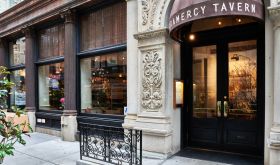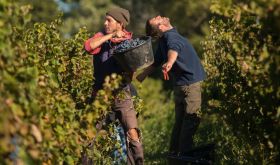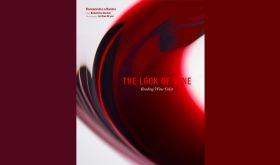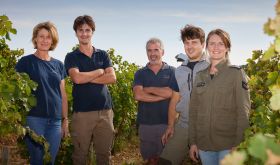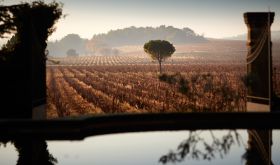Venice is synonymous with water but at 8.45am when I dived into Bar da Elio by the Rialto bridge for an espresso I had already become less than enthusiastic about the water's ubiquity.
The glorious sunshine during the first week of April had given way to torrential rain and a cold wind. The puddles were now so deep that it was difficult to distinguish between the calle and the canals and the most suitably dressed people on the vaporetto were the schoolchildren in their wellington boots.
The café's entrance provided therefore a warm, dry and convenient place to watch Venice's markets come to life, to see not just what Venetian housewives would be cooking later that day but also to check out what would feature on the menus of its better restaurants.
No other city exposes its inner workings quite as openly as Venice, from the manner in which it receives goods – either at the railway station or the Piazzale Roma – to the way it disposes of them in rubbish barges that head out of the lagoon. And perhaps no other aspect of Venetian life displays it quite as openly as its restaurants.
By the Piazzale Roma I watched large metal containers, full of cases of prosecco (the local sparkling wine which with peach juice makes those unforgettable bellinis), still red and white wine, mineral water and all kinds of soft drinks being unloaded from lorries, then loaded on to barges, then transported into the city only to be unloaded on to trolleys, humped over bridges and finally delivered to their destination.
From the vaporetti I watched the specialist barges stuffed with boxes of buffalo mozzarella, milk, cheese and yoghurt ply their way through the busy canals. From my hotel balcony early one morning I admired the way in which Bruno, the driver of a barge, delivered six boxes of sparkling fresh fish to a nearby restaurant after which he proceeded to wash down the barge with canal water before casting off. And all this without slipping on the wet surface or putting out his cigarette.
These boxes, and many others that day, had come from the fish stalls of the Rialto market. There were boxes of small sea bass still so fresh they were curled in rigor mortis; boxes of monkfish, cod – fresh and dried, as salt cod in tortellini or on bruschetta is a Venetian delicacy – live eels, sinister and slippery cuttlefish, turbot and mackerel. There were large hake, about to be filleted and boxes of shrimps, prawns and clams for spaghetti alle vongole, a dish I was to enjoy that lunchtime in perhaps its finest rendition. And then, closer to the vendors, were the string bags of mussels, winkles and a small crustacean, served like an oyster on the half shell and known locally as a sea truffle.
Turning left out of the cafe brings you face to face with Venice's other culinary attraction in the spring, its vegetables. From the island of St Erasmo, towards the Lido, come the tenderest peas; from far and wide comes asparagus, both the thin white and the thicker green varieties, for a spring risotto; mounds of radicchio de Treviso; boxes of small, tender artichokes to be sautéed in olive oil and, as an illustration of just how much Venetians adore this particular vegetable, there are alongside ready-prepared artichoke bottoms, which float gently in a slightly saline solution to preserve their colour and freshness. Finally, there are boxes and boxes and boxes of blood oranges from Sicily to quench everyone's thirst when the rain finally stops.
A sign of this almost umbilical dependence between the Rialto markets and Venice's better restaurants is that both are closed simultaneously on Sunday and Monday (the ultra expensive and equally unforgettable Harry's Bar is the exception and is open on Mondays). And this symbiosis was memorably summed up by Luca di Vita, the co-proprietor of Alle Testiere, when he explained with a wave of his hands that they were closed on these two days because, 'No market, no fish, no work.'
Passion is the obvious motivator behind Alle Testiere (which means bedheads, three of which hang from the walls) because its size, perhaps 10 metres wide and 6 metres deep (including the kitchen) precludes it ever making a great deal of money. There is space enough for only eight tables, mostly for two and all close together but what inspires it is a genuine sense of purpose which, allied to highly attentive cooking, makes for food way above the Venetian average.
The restaurant's purpose is really to show off the freshest fish on offer in the market that morning. There is therefore no menu – di Vita moves from table to table, explaining each of the four or five antipasti, primi piatti and then the main courses – before metamorphosing into the restaurant's wine waiter (the wine list has been chosen with equal passion and we drank an highly unusual but deeply impressive red, Schioppettino, from Friuli). Then he and his assistant stand back and allow the chef and his assistant to take one step out of the kitchen to hand over the fruits of their labour which they then deliver.
First came a steaming dish of mussels with a spicy tomato sauce and a hint of orange, half-a-dozen sea truffles and a sashimi of tuna, followed by gnocchi with diced squid, short pasta with shrimps and fennel seeds and the best ever spaghetti with clams, because the pasta to seafood ratio was 50/50, the whole coated in luscious olive oil, diced garlic and parsley. Main courses were if anything even simpler: prawns sautéed with lime and ginger, a fillet of sea bass and a fish mixed grill, one plate comprising a small sole, a sea bream, a soft-shell crab, a langouste and a cube of tuna, all tenderly sautéed. With wine (55 euros), coffee and a trio of unusual desserts including a pear tart with spices and grappa, our bill for four came to 210 euros.
The same passion for showing off the best Venetian fare lies behind Irina Freguia's decision to open Vecio Fritolin, The Old Fryer, almost a year ago. But in this case a passion for quality is matched by Irina's stubborn determination to succeed.
'It is not easy opening a new restaurant in Venice,' she explained, 'because many of the hotel concierges have deals with certain restaurants so it is difficult to get recommended. And because so many people only come here once there is a tendency for many restaurants not to bother looking after them properly as they are unlikely ever to return.'
But from the moment Irina arrives at the table with a maternal twinkle in her eye and a plate of thin, hard biscuits with rosemary seeds baked in an old country oven, it is obvious that hospitality, in the truest sense of the word, is the key. Her menu, which aims to offer a lighter twist on traditional Venetian dishes, positively eschews canned and frozen products and uses only one non-indigenous foodstuff (Irish lamb which, she maintains, has so much better flavour than Italian).
Everything else packs bags of flavour: local shrimps with the local white polenta; a salad of spider crab and rocket; moeche or soft shell crabs, dipped whilst still alive in egg yolks and then fried for a couple of minutes on either side until crisp (these are far smaller and far better than any on offer in the UK); garganelli pasta with shrimps and artichokes and one really hearty fish stew, of eels cut into two-inch pieces and then sautéed on the bone with olive oil, diced cherry tomatoes and bay leaves. One dessert adds a particular note of distinction. The kitchen makes its own chocolate truffles mixing the strong Amedei Tuscan chocolate with rhubarb for acidity and bite and serves these delicious parcels with a glass of Jamaican rum.
From here it is a five-minute walk to Da Mori but a trip back in time of several centuries. This tavern, whose nearest equivalent in London is a pseudo Dickensian Davy wine bar, dates back to 1400 and little physically seems to have changed, other than the offering which is a large selection of wines by the glass, rolls stuffed with prosciutto, mortadella and porchetta sliced for you and a range of tapas – slices of marinated aubergine, sticks of Ubriaco cheese and small tentacles of sautéed octopus. An ideal stop if you have a lot of sightseeing to do.
Finally, to the very modern. The Ca' Pisani hotel opened last year in a former palazzo and old office building equidistant between the Guggenheim and Accademia galleries. Its conversion is a triumph of Italian design and engineering but in its attention to detail, exemplified in the tiny Alessi thermometers on the outside of the bedroom window, it is a paradigm of how comforting and comfortable a modern hotel can be. And, because the hotel only offers a wine-and-cheese bar it is an excellent base from which to explore the restaurants of watery Venice.
Alle Testiere, Castello, 5801, Calle del Mondo Novo (tel 041 5227220)
Vecio Fritolin, Calle della Regina, Rialto (tel 041 5222881, web www.veciofritolin.com)
Da Mori, Sottoportego Do Mori, Rialto
Ca' Pisani Hotel, Dorsoduro 979/a (tel 041 2401411, web www.capisanihotel.it)





